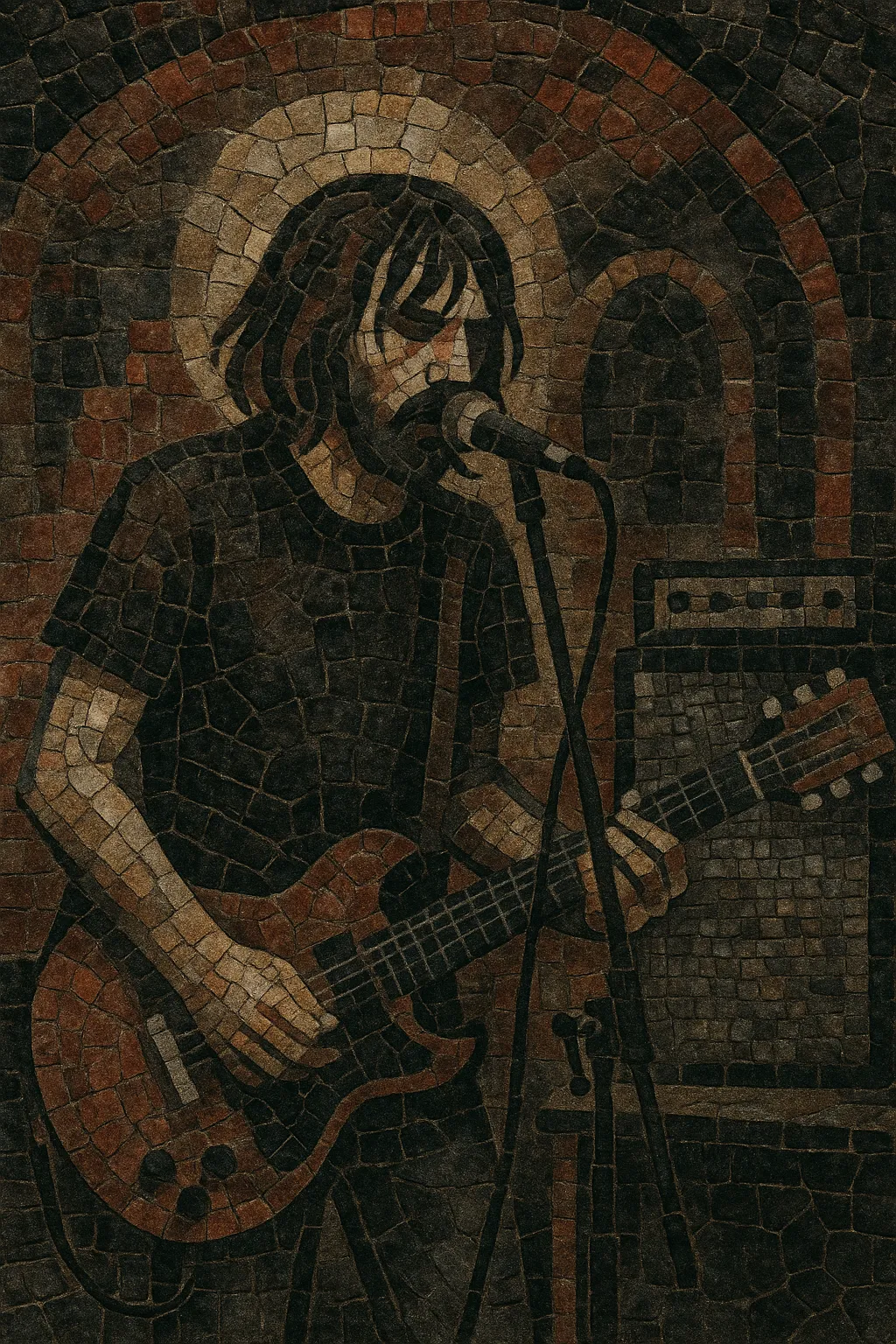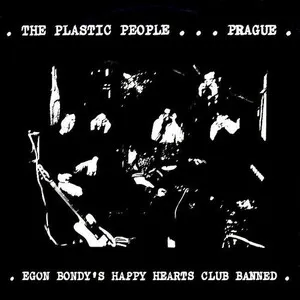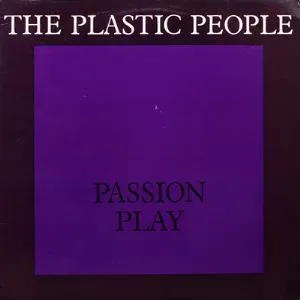
Český underground (the Czech underground) is a dissident rock-related subculture and musical movement that took shape in late-1960s Czechoslovakia and flourished in the 1970s under the post-1968 "Normalization" regime. Sonically it blends art rock, psychedelic rock, proto‑punk, free jazz, and experimental approaches, typically performed with a raw, lo‑fi, and DIY ethos.
Bands operated outside state control, staging clandestine concerts in barns, village halls, and private spaces, circulating recordings on home‑dubbed tapes and reels. Lyrics—often in Czech—draw on absurdism, existentialism, and samizdat poetry (e.g., Egon Bondy), delivering a stark critique of conformity and repression while cultivating a separate "second culture" community.
The scene’s emblematic group, The Plastic People of the Universe, helped define its sound and stance, channeling influences like The Velvet Underground through Czech sensibilities. Beyond music, český underground encompasses a broader countercultural network of writers, visual artists, and organizers who sustained the movement against censorship and police harassment.
The český underground emerged in Prague and other Czech locales at the tail end of the 1960s, as rock musicians and artists sought freedom from official cultural control. The Plastic People of the Universe (founded 1968) became the scene’s focal point, absorbing art rock and psychedelic influences and translating them into a Czech context. Early predecessors like The Primitives Group and art provocateurs around Milan Knížák (Aktual) set the template for experimental performance and anti-establishment intent.
After the Prague Spring was crushed in 1968, the state tightened cultural regulation. Many underground bands lost official licenses, forcing them into illegality. Secret concerts, rural gatherings, and DIY distribution defined the decade. The 1976 arrests and trial of members of The Plastic People of the Universe and DG 307 drew international attention, solidifying the underground’s role as a symbol of cultural resistance and galvanizing support networks.
The crackdown helped catalyze Charter 77, a human-rights initiative supported by artists, writers, and future president Václav Havel. Underground theorist Ivan Martin Jirous ("Magor") articulated the concept of a parallel "second culture"—an autonomous space of creation outside state structures. Samizdat publications (e.g., Vokno) and tape networks sustained the scene alongside bands like Umělá hmota and Extempore.
Despite continuing pressure, the underground persisted into the 1980s, nurturing groups such as Psí vojáci and Garáž. The Velvet Revolution in 1989 legalized previously banned artists, enabling public performances and reissues. Mejla Hlavsa formed Půlnoc, and The Plastic People returned to stages at home and abroad. The scene’s legacy fed directly into Czech alternative and experimental rock of the 1990s and 2000s, remaining a touchstone of artistic independence.
Český underground stands as both a musical style and a resilient cultural network. Its fusion of avant‑rock aesthetics, poetic lyricism, and DIY survival tactics shaped the DNA of Czech alternative music, while its history remains an emblem of the power of art in the face of authoritarian constraints.
Use a core rock setup (electric guitar, bass, drums) augmented by saxophone, viola/violin, and keyboards or organ. Favor gritty tones, tape saturation, and intentional roughness. Extended techniques (feedback, prepared instruments, free-jazz sax squalls) and drones can underscore tension.
Build songs from repetitive, modal or minor-key riffs with ostinatos that slowly mutate. Alternate between loping, hypnotic grooves and sudden bursts of chaos or free improvisation. Do not fear looseness—slightly unsteady tempos and rough ensemble blend are part of the aesthetic.
Employ speak‑sing delivery, declamation, or chant-like lines. Melodies can be narrow-ranged and incantatory, letting timbre and words carry meaning. Use Czech (or the local language) for authenticity; phonetic punch and prosody matter more than polish.
Draw from underground poetry and absurdist literature. Themes include alienation, surveillance, spiritual hunger, and black humor. Allude rather than preach; let symbolism, surreal imagery, and irony critique power structures.
Keep forms open: jam-based structures, long codas, and interludes of noise or free improvisation. Contrast sparse sections (voice + drone) with dense tutti climaxes.
Record live to tape or simulate that feel: minimal overdubs, room mics, and natural bleed. Use DIY artwork and hand-copied zines or notes to frame releases. If performing, cultivate intimacy—small spaces, minimal lighting, and a communal atmosphere echo the original clandestine shows.




![Midnight Mouse [Půlnoční myš]](https://e.snmc.io/i/300/w/badb455c4827522967b72f0417d85d11/2180768/The%20Plastic%20People%20of%20the%20Universe%20-%20Midnight%20Mouse%20%5BP%C5%AFlno%C4%8Dn%C3%AD%20my%C5%A1%5D%2C%20Cover%20art.webp)


